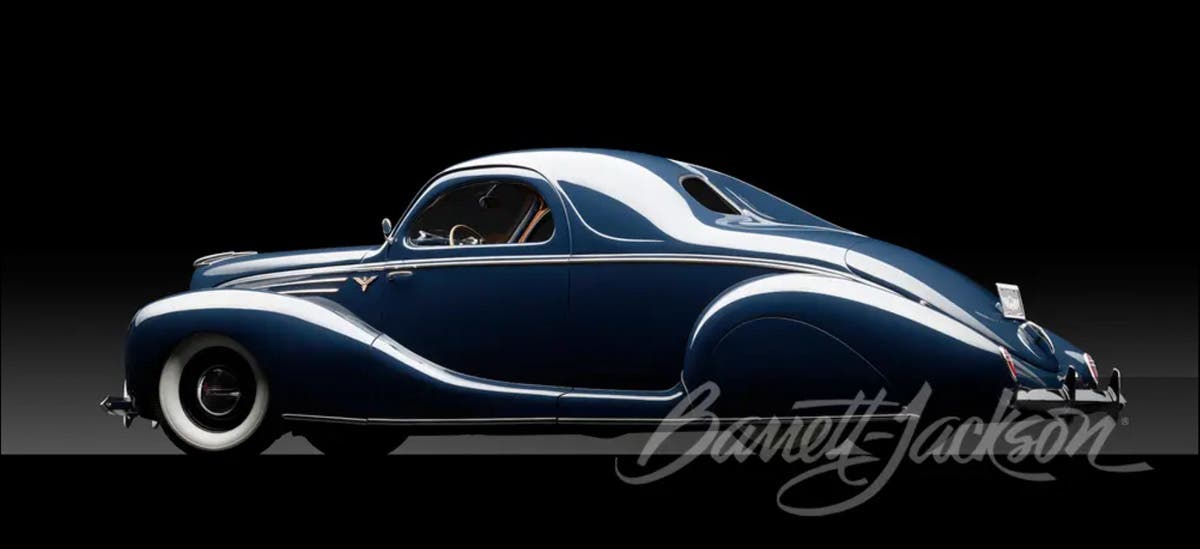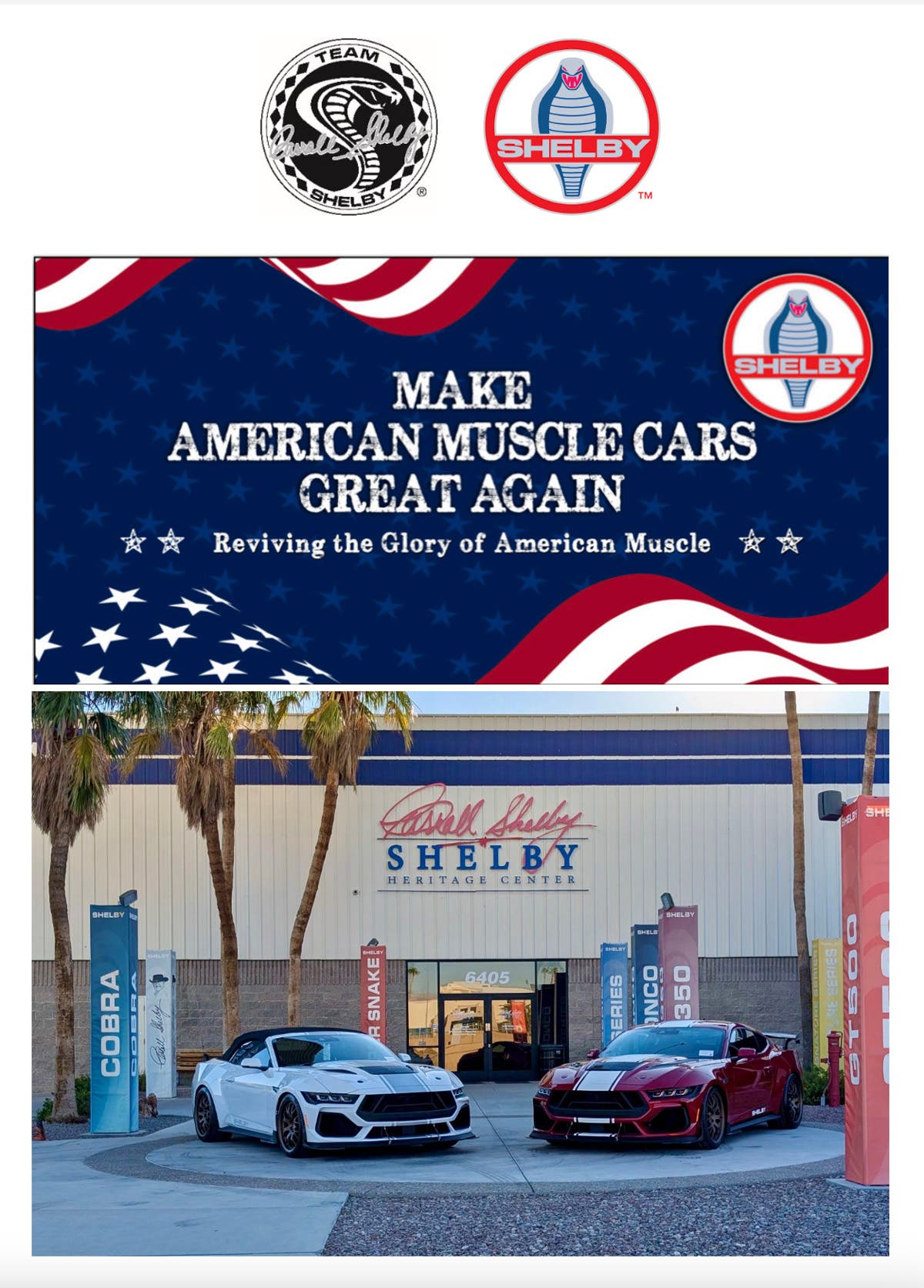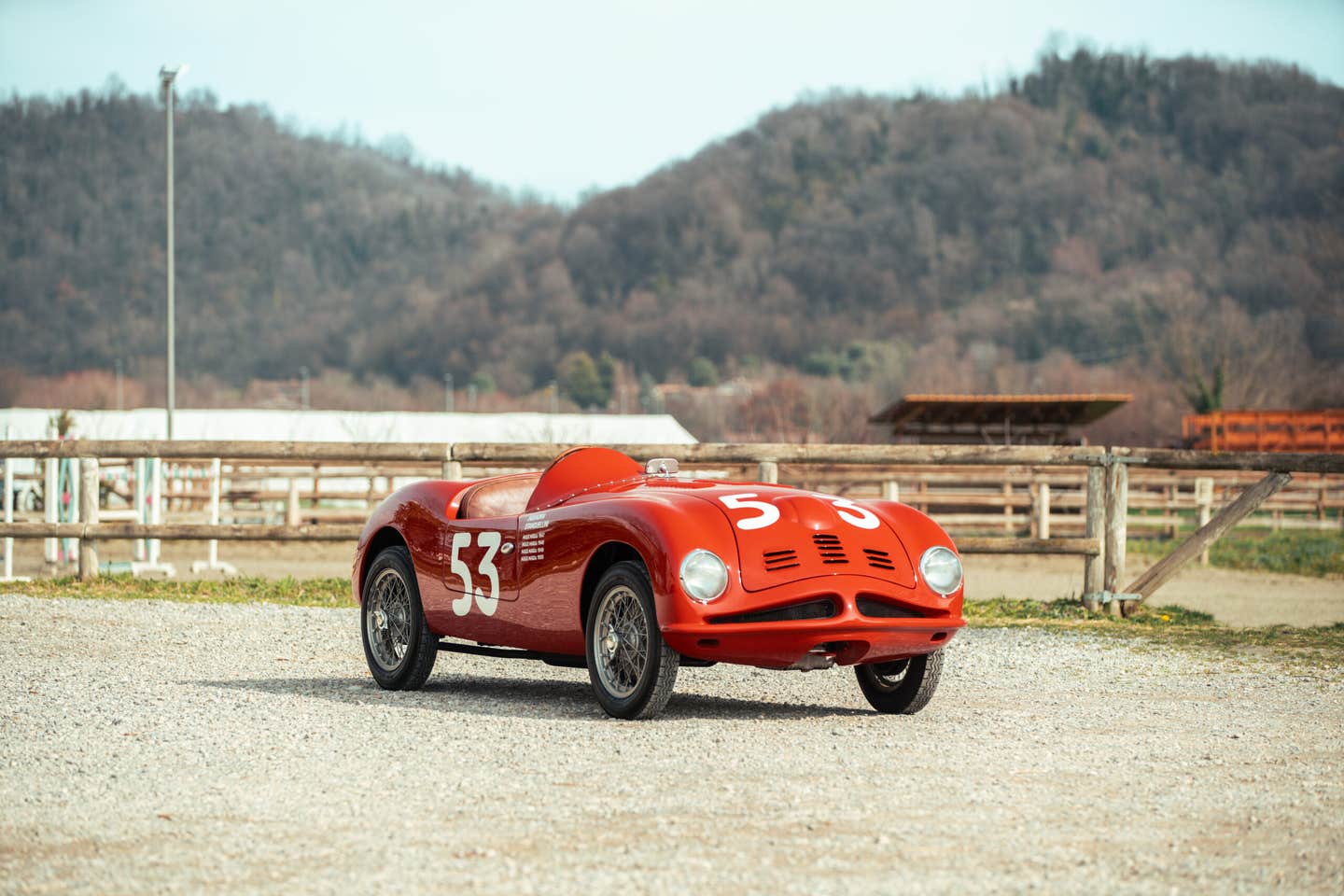Asymmetrical Art: Exner creation is slightly off-center
Not all of the most-anticipated cars in Monterey during the mid-August automotive events are found on concours fields — many of them will be seen on the blocks of the hobby’s most prominent auction companies. Among the most anticipated is the 1960 Plymouth XNR.
- By the Old Cars Weekly staff; Images courtesy of RM Auctions
Not all of the most-anticipated cars in Monterey during the mid-August automotive events are found on concours fields — many of them will be seen on the blocks of the hobby’s most prominent auction companies.
Among the most anticipated is the 1960 Plymouth XNR to be offered by RM Auctions at its Aug. 17-18 sale in Monterey. The futuristic XNR was designed by Virgil Exner, one of Detroit’s most forward-thinking designers. By 1960, Exner already had a slew of Chrysler Corp. dream cars to his credit, many of which had inspired production car designs. All Chryslers driven off the lot during the mid-1950s and into the 1960s carried some hallmark of an Exner creation that graced an auto show podium.
In a slight twist, Exner used the all-new Chrysler Valiant compact production car, which he designed, to build a unique sports car. According to RM Auctions, the XNR, “an abbreviation of ‘Exner,’ was a roadster of a radical asymmetrical design, with all major streamlining areas located off-center and in line with the driver. The wedge-shaped design featured a driver’s headrest with a large fared-in stabilizing fin at the rear, which in turn culminated in a large X-shaped chrome bumper that created a dramatic visual effect. The passenger seat was mounted lower within the body than the driver’s seat, allowing the installation of a Le Mans-style tonneau cover that easily converted the XNR into a single-seat racer.”
Asymmetrical designs were all the rage around 1960. Customizers in California were adding off-center hood scoops and other visual components to set their modifications apart. Along with such custom car notables as Ed “Big Daddy” Roth, Exner was part of this trend. However, in the case of the XNR, Exner was continuing the XNR’s asymmetry from the engine to the body, giving the car a unique sense of rhythm. Chrysler’s new Slant Six engine allowed for a lower hood profile by virtue of the cylinder block’s 30-degree angle from the standard vertical position. As a result of the slanted engine, the air cleaner was even with the valve cover, leaving the engine bay unusually asymmetrical.
The radical body design was developed at the Chrysler design studios in Highland Park, Mich., and the chassis was shipped to Turin, Italy, where Ghia craftsmen handbuilt the body to Exner’s specifications. The powertrain was upgraded with the 170-cubic-inch Slant Six equipped with Chrysler’s HyperPak tuned intake manifold, four-barrel carburetion, a modified cylinder head and other high-performance parts including a special camshaft, upgraded pistons and twin tuned side-exit exhaust pipes.
According to RM Auctions, “the high-winding XNR engine was built to the same specifications as those prepared for Chrysler’s entries in the newly formed NASCAR compact racing class, where Slant Six entries swept the top seven places at Daytona in 1960. With its true race-bred performance engine, three-speed manual transmission and relatively lightweight roadster body, the XNR attained a top speed of over 150 mph in testing.”
As a concept car intended for show duty, the XNR’s construction featured a high level of detail. Among its unique features were multi-piece hubcaps, fine leather interior upholstery, a removable glove box/camera case and a full complement of uniquely styled instruments.
A notable survivor
After display at various auto shows in the United States, including the 1960 New York Auto Show, the XNR was returned to Ghia and subsequently sold to a businessman in Geneva, Switzerland. According to research by RM Auctions’ staff, Mohammad Reza Pahlavi, the late Shah of Iran, spotted the XNR while on a skiing trip in Gstaad. He purchased it and shipped it to his homeland. The XNR later appeared in the May 1969 issue of National Geographic, where the car was photographed in Kuwait. By 1974, the XNR was in Beirut, Lebanon, and hidden away in a basement for more than 35 years, where it miraculously survived the Lebanese Civil War of 1975-1990. Karim Edde, the current owner, acquired the XNR some 23 years ago.
Reviving a legend
Edde entrusted the XNR and its restoration to the professionals at RM Auto Restoration, where the work was completed to concours-quality standards. RM Auctions noted that painstaking attention was paid to authentically restoring the XNR, and “from the outset, much time was spent researching every detail to ensure the XNR was restored exactly the way it was first shown in 1960.”
Plenty of period photographs and historical information were available on the car through numerous sources, including Virgil Exner Jr., as well as retired engineers who worked at the Chrysler design studios when the XNR was first developed. Several period articles were also written on the XNR in Motor Trend and Road & Track, which further aided the restoration.
RM Auto Restoration said the XNR arrived at its facilities with the body shell intact and a limited amount of the original chassis components. The car did retain its original seats, the side-exhaust shielding and some mechanical linkages. The suspension components were rebuilt or replaced, and the rear-axle assembly was rebuilt with the correct final-drive ratio. The six-cylinder engine was built to the specifications used for NASCAR racing engines produced in 1960 and produces approximately 250 hp. Modified brake, clutch and accelerator linkages were fabricated, as well as a complete side-exit, dual-exhaust system and muffler shielding.
Although the body was largely intact, most of its panels required extensive straightening and finishing, according to RM Auto Restoration craftsmen. The XNR’s unique grille and the front and rear bumpers are original to the car. The remaining chrome and stainless trim was fabricated. The unique instrument cluster was missing, and its replacement required fabrication using various modern precision design and manufacturing methods, including computer-aided design (CAD), water-jet cutting and detailed machining work.
The seat frames were repaired and the leather upholstery was handstitched to match the original interior. New aluminum door trim panels were fabricated using the original items as patterns, new leather armrests were hand sewn, and the removable glove/camera box was re-created using photographs as a guide. Re-creating the car’s unique and complex hubcaps required extensive use of CAD and drafting, metal spinning, water cutting and the polishing of over 35 individual parts. In addition, a number of intricate hood, trunk and other compartment latches were custom-made.
Carefully restored to its original glory, the completed XNR epitomizes the stylistic freedom of that wonderful age when fierce competition among America’s manufacturers dictated bold advances in design to attract the attention of the motoring public.
Editor’s Note: Watch for the sale results of the XNR to appear in Phil Skinner’s upcoming coverage of RM Auctions’ Monterey sale.
Find everything you need to know about Chrysler and more in our newly released Standard Catalog of Chrysler 1914-2000 -- now with updated pricing!








